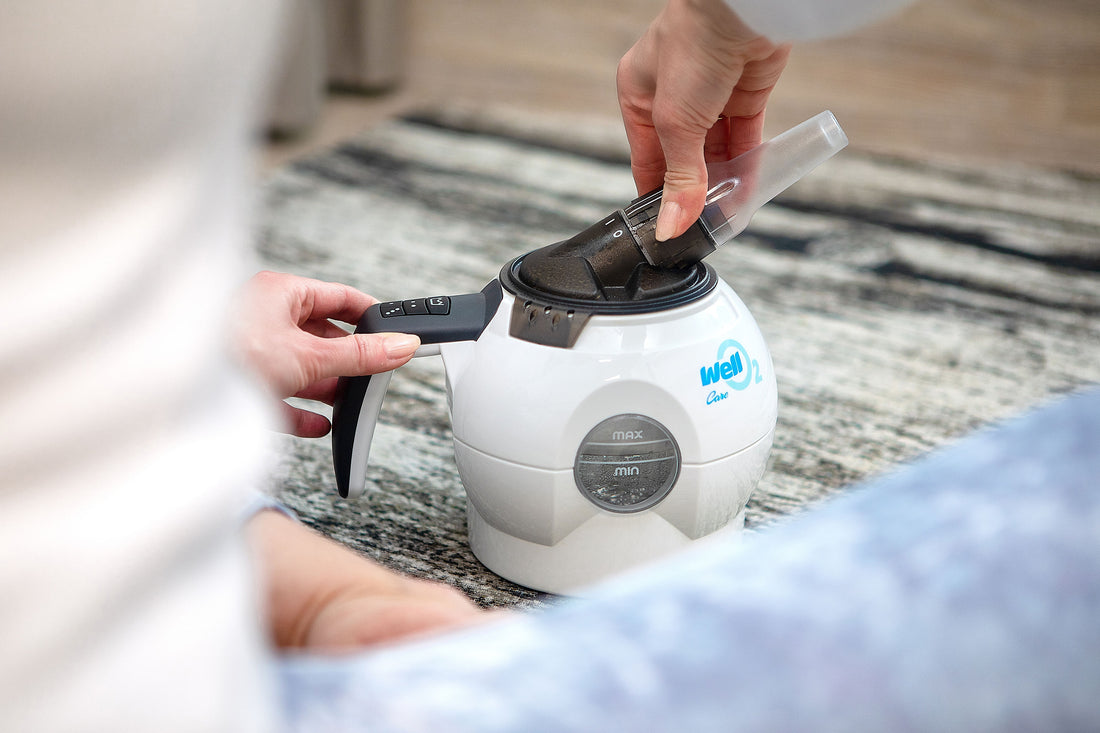Have you ever thought about the importance of muscles related to breathing and transporting oxygen into your body? The role of respiratory muscles is to take care of the breathing movement of the lungs. Different muscle groups are responsible for inhalation and exhalation.
It is commonly believed that inhalation requires active muscular effort while exhalation happens automatically. To some extent, this is true, but exhalation also plays a crucial role in activating the body's calming nervous system and initiating recovery. For this reason, strength and the ability to actively perform enhanced and deep exhalation are also required.
It is often assumed that for individuals with respiratory issues, exhalation becomes difficult. Exhalation is measured and often targeted for enhancement as part of treatment. However, when a person with a severe lung condition experiences breathlessness, it is frequently observed that the active phase of breathing, which is inhalation, becomes challenging and demands significant muscle effort.
Breathing is a delicate process involving various functions of the body
It is important to remember that breathing is a complex process and cannot be viewed solely from the perspective of respiratory muscles and breathing movement.
The brain's respiratory center regulates breathing frequency and sends commands to respiratory muscles. Breathing frequency is also influenced by the balance of oxygen and carbon dioxide in the blood. Therefore, breathing is a complex system involving not only muscles but also the nervous system and blood gas balance. This complexity makes breathing vulnerable, and it can easily deviate in an undesired direction, such as becoming shallow or too rapid. Various respiratory conditions and stress are examples of situations where breathing can react negatively to changes in the body or the environment.

Respiratory muscles play a crucial role in managing symptoms and tolerating the sensation of breathlessness for individuals with respiratory conditions
To strengthen respiratory muscles, one needs to engage in breath-demanding exercises. For individuals suffering from respiratory conditions, participating in breath-demanding exercises can be uncomfortable, as it often triggers a feeling of breathlessness.
If engaging in breath-demanding exercises is not possible for any reason, respiratory muscles can be strengthened through WellO2 breathing exercises – even from the comfort of your own couch. According to a study conducted in Finland, as little as five minutes of daily WellO2 exercise significantly improves respiratory muscle strength.
A month-long WellO2 exercise period increased the participants' inhalation strength by over 20% and exhalation strength by over 11%*. In addition to improved respiratory muscle strength, the participants noted that the one-month exercise period also alleviated various breathing-related issues, such as breathlessness, cough, mucus production, and chest tightness.
As respiratory muscles strengthen, the threshold for breathlessness rises. This makes breath-demanding exercises feel more manageable, allowing for the development of overall body muscle strength, regardless of a respiratory condition. This, in turn, improves performance in daily activities.
For individuals with respiratory conditions – here’s how to utilize WellO2 exercises in your daily life:
- Perform a WellO2 breathing exercise before taking your inhaled medication. Since WellO2 exercises effectively open the lungs, medication can get deeper into the airways. Additionally, the warm steam from WellO2 enhances the moisture balance of the mucous membranes, further aiding medication absorption.
- Conduct a short WellO2 breathing series before physical exercise or any other demanding daily activities. WellO2's resistance and warm steam effectively warm up respiratory muscles, making it easier to get started.
- Engaging in WellO2 exercises in the evening reminds the body of the importance of deep breathing, opens the nasal passages, and moistens the upper respiratory tract. Consequently, WellO2 exercises improve sleep quality and enhance recovery. Regular training can also reduce snoring.
- If breathing feels challenging in your daily life or if your breathing rhythm accelerates, WellO2 can help intensify, calm, and deepen your breath.
When necessary, WellO2 exercises can be performed multiple times a day, as there is no maximum amount for exercises. Short WellO2 exercises may be needed in situations like these:
- Feeling tightness in the chest, making breathing difficult.
- Experiencing nasal congestion or having mucus in the throat.
- Having mucus in the airways that is difficult to cough up.
- Constant coughing disrupts daily life.
- Experiencing sinus issues.
- Frequent sneezing annoys you.
Do you recognize yourself in any of the situations described above? WellO2 exercises could be beneficial for you! If you need more information about the WellO2 breathing exercise device, you can find interesting articles related to the topic below.
More useful articles:
WellO2 – An Effective Tool for Breathing Exercises >>
Are You Getting Sick? WellO2 Breathing Trainer Helps Prevent Cold Symptoms! >>
WellO2 Breathing Training for Relief during Pollen Season >>
*Kuronen, I., Heinijoki, J. & Sovijärvi, A. (2023) Effects of low workload respiratory training with steam inhalation on lung function in stable asthma: a controlled clinical study.

